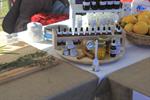Start Your Herb Business with this course and Help from Professional Tutors
- Learn to identify, grow, harvest and use a wide range of herbs.
- Improve your knowledge, employment prospects or herb business opportunities.
- Turn your fascination with these interesting plants into a life-long passion and a career.
Lesson Structure
There are 12 lessons in this course:
-
Introduction and Herb Identification
-
Culture (Soil, mulch, planting, feeding etc)
-
Propagation (Seed, cuttings, division etc.)
-
Plant Health
-
Processing And Using Herb Products
-
The Mints (Mentha spp.)
-
Lavenders and Thymes
-
Other Lamiaceae Family Herbs (e.g. Sage, Balm)
-
The Artemisias & Compositae (Asteraceae) - The Daisy Herbs
-
Umbelliferae Herbs (Apiaceae) - The Parsley Family
-
Onion Herbs (Liliaceae) - (e.g. Chives, Aloe vera)
-
Miscellaneous Herbs
-
Rosaceae Herbs (eg. Rose & Strawberry)
-
Scented Geraniums
-
Native Herbs (eg. Boronia, Tea Tree)
-
Natural Pest Control
-
Designing Herb Gardens
-
Home Herb Gardens
-
Public Landscaping With Herbs
-
Herb Nursery Management
-
Herb Farming
-
Herb Enterprises
Aims
-
Differentiate between different varieties of herbs in cultivation.
-
Explain the general cultural practices used for the growing of herbs.
-
Determine harvest and post harvest techniques for herb crops, including processing, storage and useof herbs.
-
Develop a production plan for a herb crop grown for harvesting.
-
Develop a production plan for a herb nursery.
-
Design a herb garden for a home or public garden.
-
Evaluate the production of herbs or herb products in a commercial business.
What You Will Do
-
With illustrations and minimum comments, distinguish between major plant families which herbs belong to.
-
Compile a resource file of fifty different sources of information regarding cultivated herbs.
-
Prepare an herbarium collection of one hundred different herb varieties.
-
Develop guidelines for the general culture of herbs in your locality.
-
Explain different propagation methods suitable for herbs, using illustrations.
-
Demonstrate how to prepare cuttings for three different herb varieties.
-
Propagate three different varieties of commercially farmed herbs, using appropriate, but different propagation techniques for each.
-
Explain natural pest and disease control methods for a specified herb species.
-
Explain the concept of companion planting, including three examples of proven companion planting interrelationships.
-
Write a maintenance schedule for either a herb garden, nursery or farm.
-
Describe two different harvesting techniques for herbs, by outlining the steps to follow for each.
-
Determine criteria which are critical to success in the process of drying herbs.
-
Compare two different drying processes for herbs, with reference to: *equipment used *procedure *cost.
-
Produce two marketable herb products by harvesting, and processing material from a herb plant.
-
Prepare different herbal products for home use.
-
Estimate the costs associated with processing four different herbs to a marketable stage, itemising the components of costs for each.
-
Determine different species of herbs which have potential to be grown commercially as broad acre crops in your locality.
-
Describe the process of producing a specified commercial herb crop being grown organically.
-
Describe the process of producing a commercial herb crop being grown hydroponically.
-
Compare broad-acre production methods, used for three different herbs, including: *propagation *planting *crop management *harvesting *post-harvest processing; by constructing a table or chart.
-
Design a simple trial, to test the commercial potential of different varieties of a specific herb species.
-
Conduct the simple trial you designed recording details of tasks undertaken.
-
Analyse the results of the trial conducted to test the performance of a herb plants.
-
Determine the variety with greatest commercial potential from those trialled.
-
Prepare flow-sheet broad acre crop production schedules for four herbs; one each from Allium, Apiaceae, Asteraceae, Lamiaceae groups.
-
Determine minimum facilities required to produce saleable plants in a specified herb nursery.
-
Prepare a potting media suitable for growing a container herb plant of a specified species, as nursery stock.
-
Describe the procedures used in a commercial herb nursery, to produce plants for sale.
-
Differentiate between the procedures used for production of different products in a herb nursery, including:*Punnets of seedling herbs *Bare rooted plants *Standard container plants *Hanging baskets *Topiary.
-
Grow a herb plant to a commercially acceptable standard, as a tubestock container plant, through all stages of production, without supervision.
-
Prepare production schedules for two herbs from four different minor herb groups, for a specified nursery.
-
Explain the use of general landscape principles and practices in the designs of two different herb gardens.
-
Determine different applications for herbs in home gardens.
-
Determine applications for herbs in public landscaping, referring to both difficulties and advantages in different situations.
-
Design for a herb garden for a site, preparing a scale drawing showing the placement of at least 20 different varieties of herbs.
-
Explain the reasoning behind the herb garden designed.
-
Determine critical factors to establishing a new herb business, in the learners locality.
-
Analyse the business operations of a specified herb enterprise.
-
Assess market demand for a herbal product, through a phone survey and information search.
-
Compare the commercial potential of three different types of herb enterprises, in your local area

Sample Course Notes - Herb Oil Production
This is only one way that herbs can be used The boom in the industries of natural health and tourism has resulted in an increased demand for locally produced herbs.
Herbs can be supplied as either fresh produce for culinary, medical or essential oil extraction; or as dried matter for culinary and craft uses.
ESSENTIAL OILS
Some possibilities that could be readily grown:
Bergamot Monarda didyma
Cedarwood Cedrus atlantica
Chamomile, Roman Anthemis nobilis
Chamomile, German Matricaria chamomilla
Geranium Pelargonium graveolens
Juniper Juniperus communis
Lemon Citrus Limon
Lavender Lavandula angustifolia
Orange, Bitter Citrus Aurantium var amara
Orange, Sweet Citrus Aurantium var sinesis
Peppermint Mentha piperita
Rosemary Rosmarinus officinalis
Sandalwood Santalum album
Tea Tree Melaleuca alternifolia
PRODUCING ESSENTIAL OILS
A means of adding value to herbs is to extract the essential oil from the plant material. Much of the flavour and fragrance of herbs is due to their aromatic compounds and when these are extracted by distillation, the resulting product is a volatile oil-like material. Distillation techniques have been recorded to have been used as long ago as 3000 B.C. Other methods for extracting herbal essences are effleurage, maceration and pressing, however for most herbs distillation is the preferred process of extraction.
The yield of essential oil is usually very low in relation to the amount of plant material used. Depending on the quality of the herb and the distillation method used, yields of between 0.005% and 5% may be obtained. Different plants contain their aromatic compounds in different parts of the plant. Often the leaves and flowering tops are distilled, eg. Lavender and Sage. Fruits, seeds, wood, leaf and stem, roots and bark are all used to obtain essential oil, depending on the plant.
HOW CAN THIS COURSE BENEFIT YOU?
This course is comprehensive - it has helped students start up their dream businesses in the herb industry. The herb industry is quite diverse and can include large commercial herb farms, tourist attractions, people who propagate herbs to sell at farmers' markets, nursery owners or those that sell herbal products. This course will help you to hone your skills, develop your knowledge and pinpoint where you would like to go from there. You may start your own enterprise or find work in an existing one. Our professional tutors will mentor and guide you through your course so that you too can realise your aspirations.
